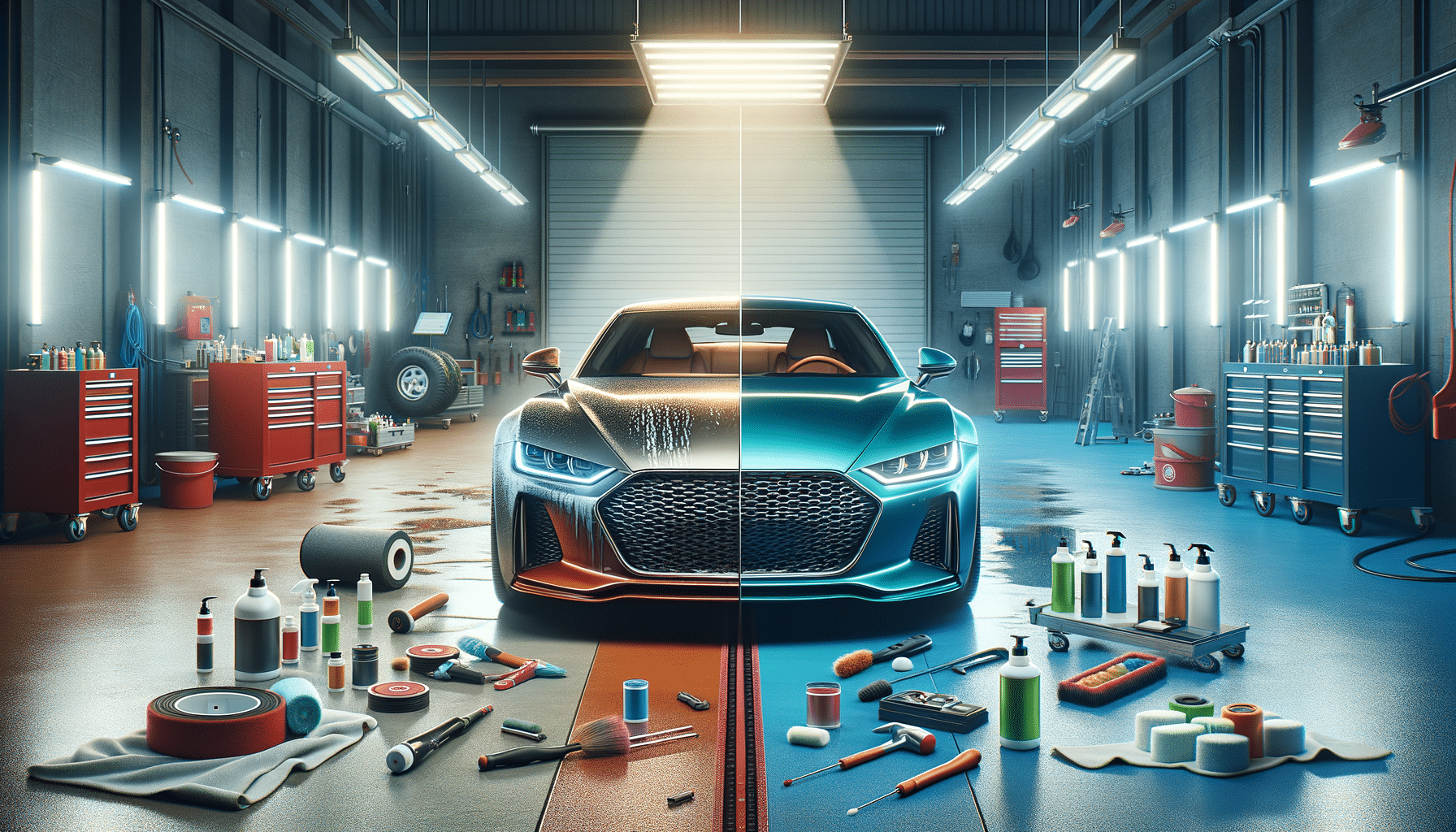
Understanding Car Coating: Enhancing and Protecting Your Vehicle
Introduction to Car Coating
Car coating is a significant advancement in automotive care, providing both aesthetic enhancement and protective benefits. Unlike traditional waxing, car coatings are designed to form a semi-permanent bond with the vehicle’s paintwork, offering a range of advantages that go beyond mere shine. Understanding these benefits is essential for car owners who wish to maintain their vehicle’s appearance and value over time. This article delves into the world of car coatings, exploring their purpose, types, and the science behind their effectiveness.
The Purpose and Benefits of Car Coating
The primary purpose of car coating is to protect the vehicle’s exterior from environmental damage while enhancing its visual appeal. Car coatings provide a robust shield against UV rays, which can cause paint to fade over time. Additionally, they offer resistance to chemical stains from pollutants such as bird droppings, tree sap, and acid rain. This protection helps maintain the integrity of the paint, reducing the need for frequent touch-ups.
Moreover, car coatings enhance the vehicle’s gloss and depth, giving it a showroom finish that lasts longer than traditional wax. The hydrophobic properties of most coatings mean that water beads off the surface, reducing the risk of water spots and making cleaning easier. These benefits collectively contribute to preserving the car’s resale value, making car coating a worthwhile investment for many vehicle owners.
Types of Car Coatings
Car coatings come in various types, each offering distinct advantages. The most common types include ceramic coatings, polymer sealants, and glass coatings. Ceramic coatings are renowned for their durability and high resistance to environmental contaminants. They form a hard layer over the paint, providing long-lasting protection and a deep, glossy finish.
Polymer sealants, on the other hand, are easier to apply and offer good protection against UV rays and minor scratches. They are often more affordable than ceramic coatings, making them a popular choice for those seeking a balance between cost and effectiveness. Glass coatings, while less common, provide an exceptionally smooth finish and excellent hydrophobic properties.
Choosing the right type of coating depends on the vehicle owner’s specific needs and budget. Each type has its unique set of characteristics, and understanding these can help make an informed decision.
The Application Process and Maintenance
Applying car coating is a meticulous process that requires precision and attention to detail. It typically begins with thorough cleaning and decontamination of the vehicle’s surface to ensure that the coating adheres properly. Any existing imperfections, such as scratches or swirl marks, should be corrected before application.
Once the surface is prepared, the coating is applied in a controlled environment, often by professionals, to avoid dust and other contaminants from affecting the finish. The application process varies depending on the type of coating, but it generally involves applying a thin layer and allowing it to cure for a specified period.
Maintenance of car coatings is relatively straightforward. Regular washing with a pH-balanced shampoo is recommended to maintain the coating’s effectiveness. It’s crucial to avoid abrasive materials that could scratch the surface. With proper care, car coatings can last several years, providing enduring protection and aesthetic appeal.
Conclusion: Is Car Coating Right for You?
Deciding whether to invest in car coating depends on various factors, including the vehicle’s exposure to environmental elements, the owner’s desire for long-term protection, and budget considerations. For those seeking to preserve their vehicle’s appearance and value, car coatings offer a practical solution that combines protection with aesthetic enhancement.
While the initial cost may be higher than traditional waxing, the long-term benefits and reduced maintenance needs make it an attractive option for many car enthusiasts. Ultimately, car coating represents a commitment to vehicle care, ensuring that your car remains a source of pride for years to come.


